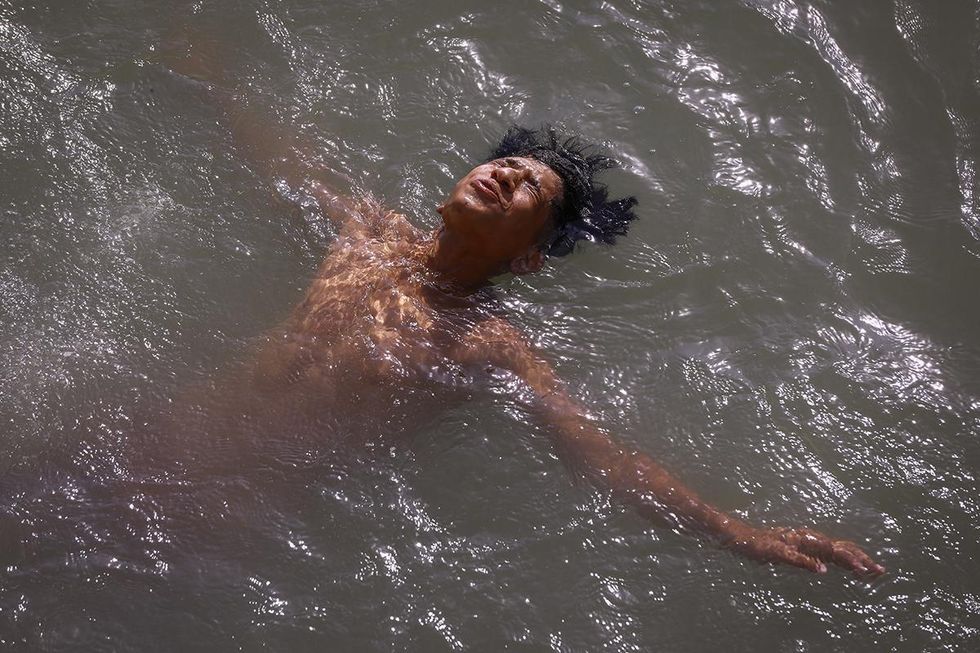The heat is on. In recent weeks, different parts of the world have experienced extreme heat waves resulting in scores of deaths, raising a crucial question: is the climate apocalypse upon us?
There have been heatwaves before. Is this really about climate change? Experts say that the answer is a resounding yes. That's because the warming of the planet as a result of greenhouse gas emissions has made extreme weather events — like the current heatwave — more frequent, longer, and more severe.
Scientists say that the massive heat dome plaguing North America's Pacific Northwest — causing temperatures in western Canada to outpace arid Dubai — is indeed alarming, but shouldn't surprise those who have been paying attention. As early as the 1980s, a report warned that "temperature changes within several decades will become large enough to have major effects on the quality of life for mankind in many regions." Clearly, the future is now.
But climate-induced heat waves are having disparate effects on high- and low-income countries. Here are some case studies.
British Columbia (Canada) and the Pacific Northwest (US). British Columbia, home to bustling Vancouver, reported almost 500 heat-related deaths in under a week, a staggering 195 percent increase compared to what would usually occur during that period. Similarly, US cities like Portland and Seattle have also experienced record-high temperatures in recent days, leading to heat-related illnesses that have sent hundreds to hospital.
Indeed, these usually mild-temperature cities were caught off-guard by the recent heat apocalypse. (Seattle and Portland have the lowest number of air-conditioned homes in the US.) State infrastructure there is also woefully underprepared in dealing with a once-in-a-generation heatwave: power cables melted, roads caved, and people clamored for reprieve from their overheating homes.
But where many homes don't have cooling, local and state governments quickly stepped in to set up "cooling centers" for people to escape the suffocating heat. That's important in a place like New York City, also experiencing sky-high temperatures, where fewer than one half of public housing residents have air conditioning in their homes. The US states of Oregon and Washington, meanwhile, also lifted COVID restrictions limiting the number of attendees at cinemas and malls to boost access to air-conditioned facilities. Still, Canadian weather experts have warned residents to brace for worse in the days ahead.
Iraq.Iraq, already one of the hottest countries in the world, has recently been paralyzed by a deadly heat wave that's taken much of its power grid offline. Even by Iraq's scorching standards, this June has been brutally hot, recording temperatures eight degrees (celsius) higher than average for this time of year. It's also given rise to a political crisis after cash-strapped Iran cut off power supplies to Iraq, demanding Baghdad pay its dues. Cranking up of air conditioning (for those who have it) has also placed mounting pressure on the country's shabby power grid, raising fears of mass unrest (last year, power shortages across Iraq caused protests that rocked the nation).The Iraqi government, meanwhile, is powerless to help residents — and officials fear that hospitals and homes could continue to be without power as temperatures soar.
Madagascar. The island nation, home to 28 million people, has been battered by climate-induced extreme weather events in recent years. Now, scorching temperatures and lack of rainfall have produced the worst drought in four decades. This came into focus last week when the World Food Programme chief warned of "unprecedented famine of biblical proportions" in nations like Madagascar, where over 1 million people are now food-insecure. One of the world's poorest countries, Madagascar does not have the resources or infrastructure to help residents weather the upcoming "lean season" — the period between planting and harvesting, when food supplies are even scarcer. The WFP is asking international donors to cough up $6 billion in aid to help 41 million people on the edge of famine in the region.
When GZERO Media asked David Wallace-Wells, author of The Uninhabitable Earth, whether these recent events might change the calculus of wealthy states vis-a-vis climate action, he said, "we've seen many similar 'wake-up' moments in the recent past like last year's California wildfires, which burned twice as many acres as any fire season had before and turned San Francisco dark at noontime with smoke, or those in Australia which burned through 46 million acres and killed a billion animals."
"The recent ambitious net-zero pledges made by so many of the world's nations and corporations are, in part, a reflection of the awakening produced by the climate disasters of the past few years, '' he said. "If there's an additional awakening coming, I suspect it will be on the adaptation side — not what can be done to limit warming, but what must be done to allow us to live with it, particularly in the parts of the world least well-resourced to respond to climate impacts as they continue to mount."
Climate is personal. A recent study found that 37 percent of all global heat deaths can be attributed directly to climate change, and that's only a sliver of deaths related to climate-fueled disasters.
Government representatives often bicker at international summits over carbon footprint levels and emissions reduction goals. But at the end of the day, ordinary people's livelihoods — and lives — are on the line as the world gets hotter each year.






